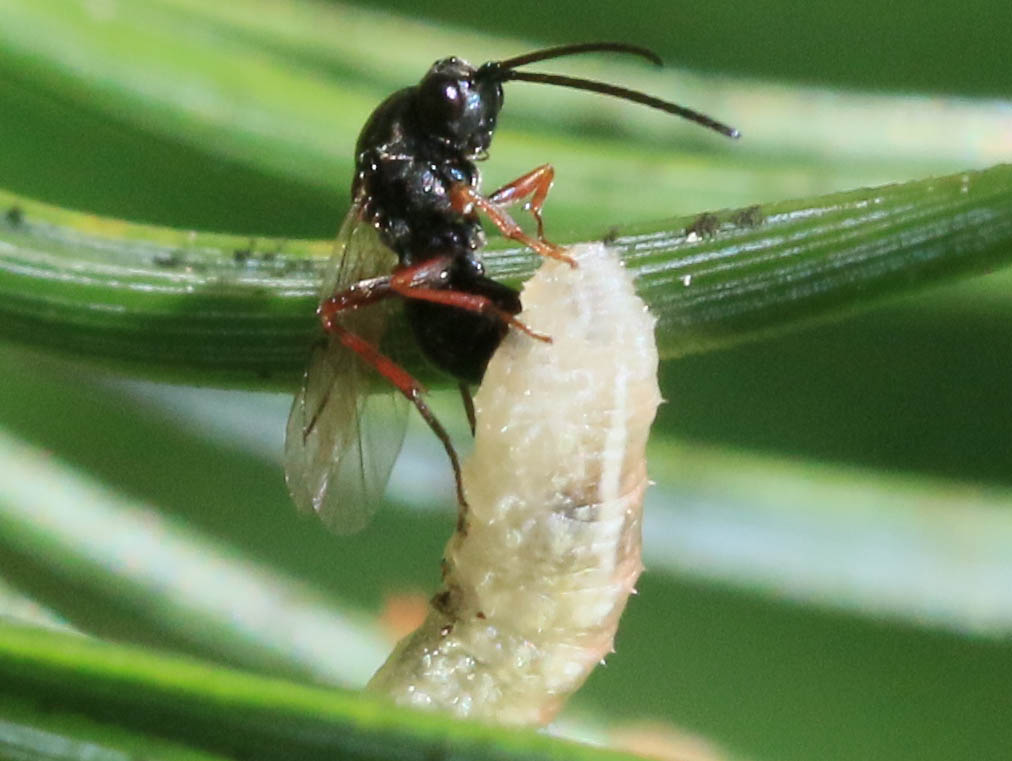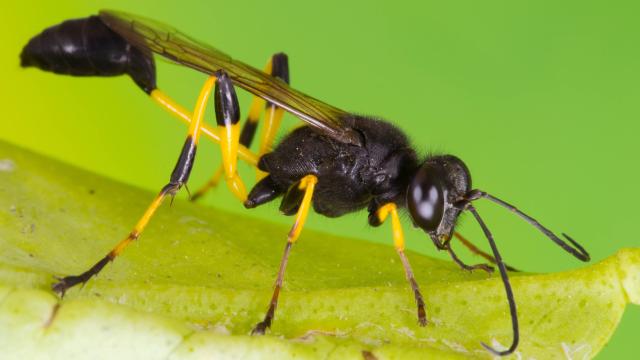It’s official: Parasitic wasps are the slave drivers of the insect kingdom. But if you’re thinking whips and chains, you’re not giving evolution nearly enough credit. Wasps enslave with biological warfare, genetically programming caterpillars to be the perfect hosts.
Tens of thousands of parasitic wasp species, called braconids, lay their eggs inside the caterpillars of virtually all lepidopterans, the insect order that includes moths and butterflies. It’s the textbook example of a host-parasite relationship. And it’s a partnership that runs far deeper than we imagined, according to a study published today in PLOS Genetics.
Analysing the genomes of several species of moths and butterflies, including the iconic Monarch and the Fall Armyworm, a team of researchers uncovered snippets of wasp DNA mixed in with lepidopteran genes. The two insect orders, Hymenoptera and Lepidoptera, diverged 300 million years ago. How could this be?
Genetic Slaves
When parasitic wasps lay their eggs inside caterpillars, they inject a giant virus called bracovirus. Bracovirus will integrate its DNA into the caterpillar’s genome, helping to suppress the host’s immune response. Wasp grubs then proceed to devour the caterpillar alive — most of the time. Sometimes, the caterpillars will fight off infection and develop into moths or butterflies, carrying with them bracovirus DNA.

Parasitic wasp laying eggs in a hoverfly larva. Image Credit: S. Rae / Flickr
Turns out, when bracovirus buries itself in a host, pieces of wasp DNA sometimes come along for the ride. When the researchers analysed the genomes of adult butterflies infected with bracovirus, they discovered several genes encoding wasp proteins. Further analysis indicated that the acquired wasp genes could play a role in protecting adult moths and butterflies against baculovirus — a common field pathogen.
That a virus is transferring genetic code between organisms isn’t surprising: In fact, the sole purpose of viruses is to integrate themselves into host genomes and make more virus copies. What is astonishing is that an animal seems to have adaptively harnessed this genetic transfer mechanism in order to influence the entire life cycle of another. Through genetic modification, wasps make caterpillars more susceptible to being devoured by baby wasps. But in the rare case that a caterpillar does survive, it carries with it a genetic tool that helps it live a long and productive adult life. Unfortunately, that also means passing on wasp enslavement virus to its offspring.
“We’ve known for a while that viruses can move genes around between species — we use viruses to do just this in some GM technologies — and we also know that animals can occasionally pick up DNA from their parasites, but this three-way gene shuffle is a particularly clear and clever example,” said Louise Johnson, evolutionary biologist at the University of Reading who was not involved with the study. “From my perspective as an evolutionary biologist, it’s also a perfect illustration of how evolution uses every trick in the book, and the book is bigger than we think.”
[Read the full scientific paper at PLOS Genetics]
Top image via Shutterstock
